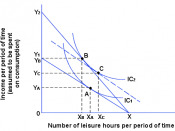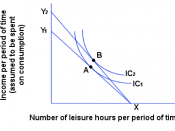Government and government regulations such as enterprise bargaining combined with the interaction of the market forces of demand and supply contributes to create differences in income in a labour market. Therefore this determined the price of labour or the wage levels and the quantity of labour or employment levels. Also factors affecting supply and demand influence the income difference.
The occurrence of differences in income in a labour market is due to the interaction between individuals who are willing to supply their labour to earn an income and employers who are on a demand to obtain the most appropriate labour skills for their production processes. In some areas of a labour market, there may be a high demand with a shortage for workers with specific and high level skills. As a result, some employers are more willing to offer higher pay to them than those with lower skills.
Factors such as the output of the individual firm, general economic conditions, the productivity of labour and costs of other inputs will affect the labour demand and influence the income differences.
Whereas, the supply of labour is influenced by pay levels, working conditions, skill and education requirements, the participation rate and the mobility of labour. In other words, differences in people's skills, education and opportunities to earn will have an effect on the disparity of income earned among workers.
According to the law of diminishing marginal returns, each extra worker will contribute less to total production than the previous worker, so firm will only employ the extra worker if they pay a lower wage rate. So when wage rates declines, the demand for workers will increase.
As the wage rate increases, people will be more willing to supply their labour. Similarly, when the price of labour, wage falls, an individual firm will...



Sounds like you've copied out of a book
This doesn't read correct. Im presuming you have taken sentences out of a book and put them together without proper editing. That doesnt work. Therefore this makes the syntax of this essay rather confusing
1 out of 1 people found this comment useful.